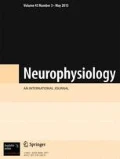After the discovery of the “mirror” neurons in primates, some researchers tended to explain action understanding as a result of functioning of these units. The proponents of the traditional view on the nature of this cognitive and social phenomenon assume that the mirror neurons do not provide action understanding or provide it only partly. There exist empirical data that cannot be explained through the mirror neuron model of understanding others’ actions. Analyzing the mirror neuron data, I revise their function and propose an alternative role of this type of neurons. At first, goals and intentions of the executor’s action are coded outside the mirror neuron system. If the action is important for the observer and can be useful in his own motor repertoire, his/her mirror neuron system implicitly reproduces the action, retrieving the kinematics and sensory consequences the observer experienced in the past while executing the same action. Thus, the implicit reproduction facilitates the observer to execute this action either immediately or in the future. More likely, precisely this, but not action understanding, is the function of the mirror neurons.
Similar content being viewed by others
References
V. Gallese, L. Fadiga, L. Fogassi, and G. Rizzolatti, “Action recognition in the premotor cortex,” Brain, 119, No. 2, 593-609 (1996).
L. Fogassi, P. F. Ferrari, B. Gesierich, et al., “Parietal lobe: from action organization to intention understanding,” Science, 308, 662-667 (2005).
V. Gallese and A. Goldman, “Mirror neurons and the simulation theory of mind reading,” Trends Cogn. Sci., 2, No. 12, 493-501 (1998).
G. Rizzolatti and L. Craighero, “Mirror neuron: a neurological approach to empathy,” in: Neurobiology of Human Values, J.-P. Changeaux et al. (eds.), Springer, New York (2005), pp. 107-124.
V. Gallese, “Embodied simulation: from mirror neuron systems to interpersonal relations,” in: Empathy and Fairness. Novartis Foundation Symposium, Vol. 278, Wiley, Chichester (2006), pp. 3-19.
V. Gallese, “The “shared manifold” hypothesis: from mirror neurons to empathy,” J. Conscious. Stud., 8, Nos. 5/7, 33-50 (2001).
G. Hickok, “Eight problems for the mirror neuron theory of action understanding in monkeys and humans,” J. Cogn. Neurosci., 21, 1229-1243 (2009).
G. Csibra, “Action mirroring and action interpretation: An alternative account,” in: Sensorimotor Foundations of Higher Cognition. Attention and Performance XXII, P. Haggard et al. (eds.), Oxford Univ. Press, Oxford (2007), pp. 435-480.
C. Catmur, V. Walsh, and C. Heyes, “Sensorimotor learning configures the human mirror system,” Curr. Biol., 17, 1527-1531 (2007).
B. Z. Mahon and A. Caramazza, “A critical look at the embodied cognition hypothesis and a new proposal for grounding conceptual content,” J. Physiol., 102, 59-70 (2008).
J. M. Kilner, “More than one pathway to action understanding,” Trends Cogn. Sci., 15, No. 8, 352-357 (2011).
G. Rizzolatti, L. Fogassi, and V. Gallese, “Neurophysiological mechanisms underlying the understanding and imitation of action,” Nature Rev. Neurosci., 2, No. 9, 661-670 (2001).
L. Koski, A. Wohlschleger, H. Bekkering, et al., “Modulation of motor and premotor activity during imitation of target-directed actions,” Cerebr. Cortex, 12, 847-855 (2002).
M. Villarreal, E. A. Fridman, A. Amengual, et al., “The neural substrate of gesture recognition,” Neuropsychologia, 46, 2371-2382 (2008).
K. Emmorey, J. Xu, P. Gannon, et al., “CNS activation and regional connectivity during pantomime observation: No engagement of the mirror neuron system for deaf signers,” NeuroImage, 49, No. 1, 994-1005 (2010).
G. Rizzolatti, L. Fadiga, V. Gallese, and L. Fogassi, “Premotor cortex and the recognition of motor actions,” Cogn. Brain Res., 3, 131-141 (1996).
C. M. Heyes, “Where do mirror neurons come from?” Neurosci. Biobehav. Rev., 34, 575-583 (2010).
A. A. Mattar and P. L. Gribble, “Motor learning by observing,” Neuron, 46, No. 1, 153-160 (2005).
J. M. Kilner, Y. Paulignan, and S.-J. Blakemore, “An interference effect of observed biological movement on action,” Curr. Biol., 13, No. 6, 522-525 (2003).
V. Kosonogov, “Listening to action-related sentences impairs posture control,” J. Electromyogr. Kinesiol., 21, 742-745 (2011).
M. Brass, R. M. Schmitt, S. Spengler, and G. Gergely, “Investigating action understanding: inferential processes versus action simulation,” Curr.t Biol., 17, 2117-2121 (2007).
S. M. Braun, A. J. Beurskens, P. J. Borm, et al., “The effects of mental practice in stroke rehabilitation: a systematic review,” Arch. Physiol. Med. Rehabil., 87, No. 6, 842-852 (2006).
L. Simmons, N. Sharma, J. C. Baron, and V. M. Pomeroy, “Motor imagery to enhance recovery after subcortical stroke: who might benefit, daily dose, and potential effects,” Neurorehabil. Neural Repair, 22, No. 5, 458-467 (2008).
M. Franceschini, M. Agosti, A. Cantagallo, et al., “Mirror neurons: action observation treatment as a tool in stroke rehabilitation,” Eur. J. Physiol. Rehabil. Med., 46, No. 4, 517-523 (2010).
M. Franceschini, M. G. Ceravolo, M. Agosti, et al., “Clinical relevance of action observation in upperlimb stroke rehabilitation: a possible role in recovery of functional dexterity. A randomized clinical trial,” Neurorehabil. Neural Repair., 26, No. 5, 456-462 (2012).
M. Grangeon, P. Revol, A. Guillot, et al., “Could motor imagery be effective in upper limb rehabilitation of individuals with spinal cord injury? A case study,” Spinal Cord, Apr. 17, doi: 10.1038/sc.2012.41 (2012).
A. Whiten and D. M. Custance, “Studies of imitation in chimpanzees and children,” in: Social Learning in Animals: The Roots of Culture, C. M. Heyes and B. G. Galef (eds.), Academic Press, London (1996), pp. 291-318.
Author information
Authors and Affiliations
Corresponding author
Rights and permissions
About this article
Cite this article
Kosonogov, V. Why the Mirror Neurons Cannot Support Action Understanding. Neurophysiology 44, 499–502 (2012). https://doi.org/10.1007/s11062-012-9327-4
Received:
Published:
Issue Date:
DOI: https://doi.org/10.1007/s11062-012-9327-4




